- Home
- Michael Duffy
Sydney Noir Page 6
Sydney Noir Read online
Page 6
A CHANGING CITY
What was Sydney like? Returning to Sydney in the mid-1960s after fifteen years in Europe, the novelist George Johnston recorded his impressions of his old stamping grounds:
‘The girls in bare feet, their long hair and loose cotton shifts, the pubs open at night, the ugly raw petrol stations where he remembered suburban cinemas to have been, the TV sets in place of the threepenny circulating libraries that had smelt of pulp paper and amyl acetate, the callous architecture and the scar tissue of urban development, absurdly trivial things like esoteric brand names of soft drinks and meat pies, the cornucopian fruit stalls and super-markets, the revolvers (small, like toys) the police displayed openly, the way everyone had given up wearing braces and waistcoats, the funny hats, the old men in shorts and thonged plastic scuffs and the young ones no longer lean and hawky, but big-bummed and beer-bellied and jowly …’83
Johnston had come back to a Sydney that had significantly changed from the one he had left. To begin with, it was bigger: in 1954 the population was 1.9 million, in 1965 2.4 million, and by 1975 it would number 3 million. And there were proportionately far more young people: like a goat in a python, the Baby Boom was a distinct bulge – big-bummed and barefooted – working its way through the demographic pyramid. At the 1971 census there were more Australians below the age of twenty-five than between twenty-five and fifty. By 1991 the opposite would be the case.84
And the people of Sydney were more varied. By the 1960s migrants from southern and eastern Europe made up a significant percentage of the city’s population. But they were outsiders, a status emphasised by the fact there were more men than women among them – an imbalance which saw them embrace Noir industries like prostitution and gambling. Partly as a result of the influx from Europe, the balance between Anglicans and Catholics was approaching parity: at the 1976 census, for the first time in the 20th century the two churches claimed a near-equal number of adherents. But underneath these demographic changes the old social order remained intact until well into 1970s, drawing its strength from the markedly provincial and conservative tone of Australian society.
There were other changes underway. On 14 February 1966, Australia adopted decimal currency, dropping the old British-derived currency of pounds, shillings and pence for dollars and cents. This was a major change in the texture of Noir life.
The old notes were beautiful: novelist Lew Wright described a jackpot in a baccarat game as looking ‘like an untidy Christmas pudding of red, green and blue in which ten shilling notes peeped out like orange peel’.85
There was an official transition period of two years in which the old and the new currencies operated side by side, but it took a lot longer for the new currency to displace the old in Noir slang. For years after 1966, in SP gambling circles a $1 note was called a ‘10 bob note’ – that is, a 10-shilling note – Wright’s ‘orange peel’. The gunman Chow Hayes was in gaol in 1966 and the adjustment to decimal currency was one of many he had to make on release: ‘It was dollars by then, but I still used to refer to them as quid.’
It was in many ways a more open society than ours. If you wanted to make a telephone call, you had to find a phone – and in the Golden Years these were not yet universal. If you needed to make an urgent call, it was acceptable to knock on a stranger’s door and ask to use theirs. ‘Information technology’ meant computers that took up entire rooms. Mobile telephones were still several decades away; smart phones four. Instead of emails, people wrote letters – lots of them. Instead of text messages, they sent telegrams.
Compared to today’s national security state, watching everyone all the time to make sure they are ‘safe’, government intruded less into people’s lives. Many people who were in Sydney during the Golden Years remember them as characterised not by limits, but by their absence. As go-go dancer extraordinaire Elizabeth Burton says, ‘We lived the best time, the freest time. We were free then.’86
WHEN SHIRLEY MET FREDDIE
ENTER THE MAGICIAN: STEWART JOHN REGAN
Stewart John Regan, ‘the Magician’, got his nickname from his habit of making people disappear. (His other nickname was ‘Shotgun’.)1 Darkly handsome, Regan liked sports cars and had a reputation for extreme violence. And he was a youthful prodigy: his debut on the Noir stage at the age of twenty-one was his involvement in the 15 January 1967 murder of bouncer Barry Flock.
Sharon Lee (not her real name) was proprietor of three of the new look ‘massage parlours’, of which the most notorious was the Lotus Blossom on Bayswater Road running down towards Rushcutters Bay.
In 1971, this streetscape would be obliterated by the construction of the Kings Cross Tunnel, but in 1967 it was still traditional Noir territory. The Sydney Stadium, where Frank Sinatra and the Beatles had performed and which would be demolished in 1970, stood at the point where Bayswater Road turned into New South Head Road. Not far away was Rushcutters Bay Park, the buttressed roots of whose giant fig trees afforded privacy to downmarket streetwalkers and their clients. (In Patrick White’s 1970 novel, The Vivisector, the artist Hurtle Duffield meets his prostitute muse Nance Lightfoot in the Park.) Nearby was the Purple Parrot, the wine bar Abe Saffron had bought for his mistress Rita Hagenfelds; Saffron’s corporate headquarters, Lodge 44, was up the hill in Edgecliff. And across the road from the Lotus Blossom was a dress shop jointly owned by Chris Ransom (not his real name) and John Regan. The latter was always in and out of the Lotus Blossom, ostensibly selling clothes to the women who worked there – but in fact he was developing his main business, extorting money from prostitutes.
In late 1966, Lee was looking for someone to run another of her parlours, the Modern Health Studio in Bondi, and Regan suggested his associate Barry Flock. She hired Flock and, early in January 1967, gave him £400 in cash to look after. According to a later interview with police this was because her partner, a petty criminal, had been drinking. ‘I am frightened he will get his hands on it and spend the lot,’ she told Flock.2
But Flock didn’t give the money back, and when Lee went looking she couldn’t find him. Flock stopped going to work at the Modern Health Studio and dropped out of sight.
Flock had a small runabout with an outboard motor, which he kept at Rushcutters Bay. John Regan took an interest in it: presumably he could see possible uses for it, like dumping bodies in the Harbour. It being the summer school holidays, Sharon Lee’s son and niece were spending the day swimming in the saltwater baths at Rushcutter’s Bay. They had been told to keep their eye out, and a few days after Flock disappeared the kids came running into the Lotus Blossom to say that he, Regan and Ransom were down at Flock’s boat. Lee walked across the Park to confront them, but by the time she got there the trio had gone.
‘Exactly the same thing happened the next day,’ she would tell police. ‘The kids were swimming at Rushcutters Bay and they told me that Barry Flock, John Regan and another man were down at their boat.’
‘I got a cab down there,’ Lee continued, ‘but they seen us coming. I know that Barry was there but he was hiding from me. I said, “Bring Barry out to talk to me”. Regan said, “What are you talking about Barry isn’t here”.’
Picture the scene: a summer’s day, school holidays, kids swimming in an old netted enclosure. The blue waters of the harbour stretching across to Fort Denison. And in the foreground, the brothel madam arguing with the apprentice psychopath about her missing £400. But before readers succumb entirely to nostalgia, they should recall that at this time the harbour was perhaps at its most polluted ever, with the concentration of chemical factories on the Rhodes peninsula dumping wastes into the Parramatta River. The most notorious example was the Union Carbide factory’s dumping of the chemicals 2, 4, 5 – T and 2, 4 – T, used for making the defo-liant Agent Orange used in Vietnam.
After some more failed attempts to track down Flock, Lee decided it was actually Regan who had taken the money.
‘I went straight over the road to John Regan’s dress shop. John Regan
was there with Ransom. I said to Regan, “Would you come out onto the footpath. I want to talk to you”. He came out and I said, “Give me back my money”.
‘He said, “Get away from me. You’ll get trouble”. I then said, “I’m going to give you up (that is, to the police)”. He said, “Get away. I don’t want any trouble off you but I can give you plenty of trouble.”’
What Regan meant by ‘trouble’ became clear the next morning when the phone rang in the Lotus Blossom.
‘I took the phone and the voice on the other end said, “Stop threatening John Regan”,’ Lee told police two months later.
‘I said, “Who’s speaking?”
‘He said, “My name is Lennie McPherson”.
‘I said, ‘What are you poking your nose into my business for?”
‘He said, “Look, John hasn’t got your money. Barry Flock put it on his house (that is, paid off some of his mortgage)”.
‘I said, “How would you know this?”
‘He said, “Now be told. You leave John Regan alone because he is one of my boys and I look after my own”.
‘I said, “Are you threatening me?”
‘He said, “You listen to me. Don’t mention my name to any police or you’re in trouble”.
‘I said, “You are an idiot”.’
Detective: ‘Do you know who the man Lennie McPherson is who you have just referred to?’
Sharon Lee: ‘Yes I have seen him … Once he came down to my shop at the Lotus Blossom with another skinny man that I later found out was named Smith (that is, Stan ‘The Man’ Smith).’
Detective: ‘What reputation or rumours have you heard about McPherson?’
Sharon Lee: ‘That he is a gun-man. He has no fear of shooting anybody.’
A week later, Flock was found shot dead in dense scrub in the grounds of the Scottish Hospital, off Cooper Street in Paddington. This patch of scrub, right in the middle of the most densely populated part of Sydney, had been Regan’s childhood hideaway, where the apprentice thief had hidden stolen property.3
The police suspected Lee of commissioning the killing – it was after all her money. But as she explained to the police, an untimely bout of kidney trouble had forced her into a private hospital and the first she knew about Flock’s death was when she read about it in the paper. As to who actually pulled the trigger, the suspects included Regan himself, his business partner Chris Ransom and sundry others.
Lee told police how Ransom had come into the Lotus Blossom a few weeks after Flock’s body was found.
She said to him, ‘I think Regan killed Barry for my money.’
Ransom replied, ‘No, you’re wrong. It has all been planned out. (Regan) has got an alibi … he was at the Pink Pussycat at the Cross. There was me, Smith, and two fellows you don’t know killed Barry.’
She continued, ‘Do you mean to sit there and tell me that you shot Barry. That’s in cold-blooded murder. Fancy doing a thing like that. The police will get you.’
He said, ‘No, they’ve got to get the weapon first and that’s at Lennie McPherson’s place.’
Lee said, ‘I am going to tell everybody what you have told me.’
He started laughing and said, ‘All you’ve got to do is prove it.’
‘Get out of my shop,’ Lee responded.
With everyone blaming everyone else, no one was ever tried over Flock’s death. And ‘The Magician’ was well and truly launched on a career that would ultimately see him credited with seven murders.
In a coda to the killing of Flock, his partner, Margaret Wearing, told police ‘since the death of my de facto husband the man John Regan has called at my home and he has told me that he had collected some money from friends of the deceased. At the time he gave me some money that he said had been collected and he was then in the company of a man I believed to be Lennie McPherson. The amount of money was $205’.4 This is an example of the Noir welfare system at work.
Another coda was the destruction of the Lotus Blossom, later in 1967, in an arson attack. ‘Ironman’ Robert Steele was blamed for starting the fire and soon afterwards he was badly bashed outside the Rex Hotel, apparently in revenge. In court in September 1968, he would deny that he had burnt down the Lotus Blossom or that he had known Sharon Lee.5
ENTER FRED KRAHE: ‘STERN, ALMOST FRIGHTENING’
Krahe is the policeman whose name is most often linked with Ray Kelly’s in terms of violence and corruption. He was born in 1919 in the northern NSW town of Kyogle, making him thirteen years younger than Kelly, and joined the police force in 1940. By 1950 he was a detective in the CIB, and in that year flew to Perth to arrest one Lionel Thomas for murder. During the trial, the defence claimed Thomas’s unsigned confession had been dictated to Krahe by his senior officer, something the police stoutly denied. The court accepted the word of the police, as courts generally did, and Thomas was sentenced to death.
In 1952 Krahe was partnered with senior officer Don Fergusson – one of the rowing mafia in the NSW Police. Fergusson had been a member of the Men’s Eight team that competed unsuccessfully at the 1936 Berlin Olympics. Fergusson’s father, NSW Police Superintendent George Fergusson, was the unofficial manager of the Berlin rowing team. Another member was Mervyn Wood, Police Commissioner from 1977–79. Over the next few years, Krahe and Fergusson solved a string of cases where women had committed murder using thallium, available in rat poison. The investigations and trials, involving apparently ordinary women and exhumations often conducted at dusk, attracted enormous publicity and led the head of the CIB to describe the duo as ‘his most skilled toxicologists’.
Probably around this time Krahe came across the young George Freeman, who in his memoir recalled without fondness, ‘I never com-plied with Krahe and I paid the penalty. On most occasions I just didn’t have enough money to satisfy him. It was Fred Krahe who fitted me for the H.G. Palmer break-ins. Fabricated evidence and a “verbal” confession guaranteed me the four-year stretch I got. Admittedly I was guilty’.6
After this, Krahe appears in the newspapers as a successful detective but not particularly prominent – the more senior Kelly tended to hog the media limelight in the 1950s and 1960s, although Krahe was often involved in major cases. He and Don Fergusson were part of a pursuit of safebreakers in 1953 when a police vehicle carrying Ray Kelly pulled alongside the speeding getaway car – Kelly shot its driver dead.
In June 1960 Krahe had another go at McPherson, charging him with the attempted murder of one John Unwin by driving a vehicle at him in William Street, Kings Cross. (Apparently Unwin had just tried to shoot McPherson.) But like Krahe’s earlier attempt to convict McPherson of George Hackett’s murder, this charge didn’t stick either.7
In December that year Krahe was one of thirty-five police in ‘the biggest marijuana raid ever in the State’ when they turned over nightclubs and flats looking for ‘the drug marijuana’ – so rare at the time that the Sydney Morning Herald had to explain to its readers what it was. Only two people were charged with possession; one was a ‘bandleader’.8 Krahe was married, and he and his wife Phyllis had four children. He became close to three other detectives, Fred Smith, Keith Kelly and Joe Green, known in some circles as ‘the Gang of Four’. Criminals called him ‘Mr Krahe’ and he was reportedly feared more than revered.9
On the morning after the 1966 capture of Ronald Ryan and Peter Walker, Krahe was one of four detectives who went to see the recaptured escapees in the cells before they faced court. The other detectives were Keith Kelly, Don Fergusson and Fred Smith.
When Ryan was asked in court if he had anything to say, he declared, ‘I would like to say I have made no verbal or written statement. We have no intention of doing so – and that applies to our trip back to Melbourne.’ But this precaution did him no good. It was part of the Crown case in his subsequent murder trial that he’d confessed to police not once but twice, first in the cell in Sydney and again on the return trip to Melbourne.
Like all successful detectives of
the time, Krahe had a stable of criminal informants. According to author Richard Hall, despite their early antagonism Lennie McPherson was among them. Hall quotes one policemen as saying of Krahe: ‘He was crook all right, but he was locking up half the crims in Sydney with the information he was getting from the other half.’10
Writing in 1992, Bill Jenkings, the Daily Mirror’s former ace crime reporter, recalled that ‘Fred Krahe was accused of every dastardly deed from murder to taking bribes. This was not the Fred Krahe I knew for so many years. He was a big, rugged-faced man. When his face became stern, it was almost frightening and he had a very intense manner whenever he’d tell you anything. He had a sense of humour, but I can’t ever recall him cracking any jokes himself, only laughing at the jokes of others’.11
Jenkings, like all police roundsmen of the time, depended utterly on his police contacts. In those days the relationship was so close that police reporters were based in the CIB headquarters, something unimaginable today. He could not have afforded to write a word about any suspicion of sharp practice, let alone corruption. It is interesting, though, that he continued to defend the detectives well after they were dead. In his memoir he dismissed all the suggestions his heroes had been corrupt and said, ‘I’m proud to have known Fred Krahe and Ray Kelly. They were tough men in tough times’.12 Possibly it was his own reputation as a journalist he was seeking to preserve.
George Freeman had a very different view. Also writing after Krahe’s death, he recalled:
‘I’ve known some crooked cops, but one stood out in the pack: Sergeant Fred Krahe.
‘Krahe was deadly and evil. It was a measure of the fear the man generated in both crooks and police that he was never brought to justice … Everybody was frightened of him…
‘When it came to dealing with crooks, Krahe had his own pricing scheme. After he’d arrest you, the paying began. You’d pay him to get bail, you’d pay some more later for a reduced sentence, you’d pay for remands, you’d pay for whether or not he gave verbal evidence against you, and you’d pay again if he decided not to give evidence against you at all.

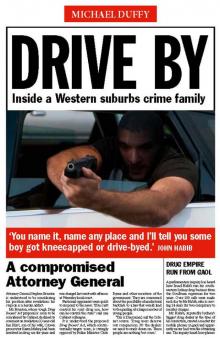 Drive By
Drive By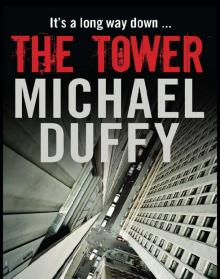 The Tower
The Tower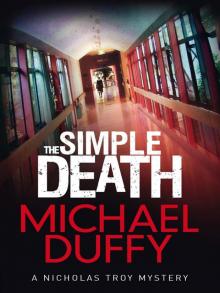 The Simple Death
The Simple Death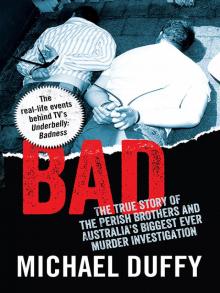 Bad
Bad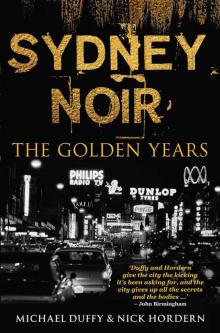 Sydney Noir
Sydney Noir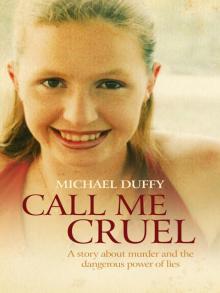 Call Me Cruel
Call Me Cruel